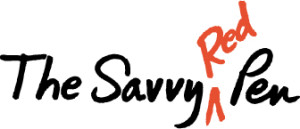It has been famously said that “it takes a village” to raise a child. It also “takes a village” to write a book. It is a good idea to gather a team of trusted associates that you both respect and trust. These are your “beta” readers who will read your manuscript and give solid, constructive input and feedback. Even the most experienced writers need outside opinions.
Your beta readers will identify what works and what doesn’t and often provide suggestions for revision. They will look at content, flow, mechanics, accuracy, and tone. So what qualities should writers look for when they’re identifying potential beta readers to meet their goals?
Here are the top nine qualities you need your team to have:
1) Trustworthy
You are entrusting beta readers with your work, so they need to protect your privacy and not share the manuscript with anyone else without permission. They should also agree to keep the feedback confidential.
2) Respectful
Beta readers should be respectful of your work and your vision. They should provide suggestions that match your goals, not their own preferences. They have the ability to express honest opinions about the manuscript while being kind. You will appreciate the constructive feedback.
It’s a good idea to provide your beta readers with specific questions to answer. Respectful beta readers will look over these questions before they dig in to the manuscript and keep the questions in mind as they read.
Your beta readers need to respect your instructions and deadlines. If you request return of feedback by a certain date, respectful beta readers should honor those dates.
3) Strong Communicator
Beta readers need to be able to clearly express their thoughts. They should effectively provide feedback.
4) Genre Knowledgeable
Your beta readers should be familiar with your field or genre. This doesn’t mean they need to be an expert, but some background is important. Ideally, their feedback is aligned with a specific audience.
5) Regular Readers
Beta readers ideally read often, and read various genres. They recognize a good book, and their reading experiences provide a broad perspective.
6) Fit Target Demographic
In a perfect world, your beta readers align with your prime audience. If they don’t fit that profile, they need to have the ability to put themselves in the reader’s shoes.
7) Objective
While you might be inclined to ask your parents, siblings, or best friends to be beta readers, chances are they won’t be objective or feel comfortable delivering a negative comment. While all authors would love to hear, “I loved every word. This is the best book I’ve ever read,” you only want to hear it if it’s true and respected by peers. Effective beta readers should be neither overly critical nor gushy complimentary.
8) Detail-Oriented
Your beta readers should be able to identify situations where there might be too much or not enough detail. They should also be able to identify plot holes or instances of unnecessary repetition.
9) Enthusiastic
Beta readers should be excited to read your writing and offer feedback. Someone who is “on the fence” about being a beta reader probably isn’t going to provide you the dedicated reader your manuscript deserves.
Finding the right beta readers isn’t always easy, but it is a crucial part of the writing and publishing process. When writers use beta readers who demonstrate the above qualities, the result is invaluable—providing constructive feedback you can use to take your writing to the next level. When you can take the feedback to heart and makes important revisions, you will create a more engaging, memorable reader experience. Beta readers can be some of the best cheerleaders, and make all the difference.
I am Gail Kerzner, your “savvy red pen.” As your writing educator and coach, I can act as your “Alpha” reader—the very first set of eyes to give you guidance and feedback.

